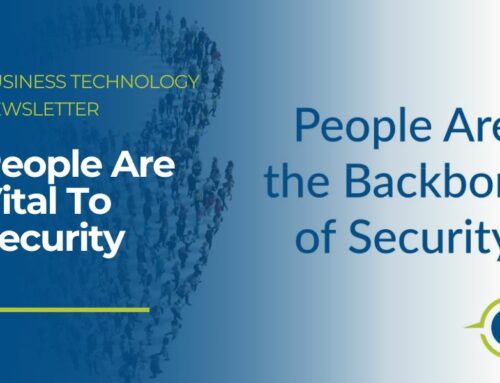July Security Awareness News
- Operation Influence
- The Impacts of Fake News
- How to Stop the Spread
Operation Influence
Information has always been both a strong resource and a dangerous weapon. In competition (and, of course, in war) we use information to deceive and confuse our opponents. This concept, known as information warfare, predates the internet by hundreds of years and has long been a strategy of influence.
In the 21st century, information warfare has marched into the modern arena of social media with a new look: disinformation. In simple terms, disinformation refers to fabricated stories created to intentionally deceive the public. In many cases, the goal of a disinformation campaign is to influence elections and destroy reputations of various high-profile individuals, organizations, or entire governments.
Influence is the keyword. The agents of disinformation campaigns want to control and shape public opinion. They do so by launching influence operations that flood social media networks with fake news, most notably via bots—software-controlled profiles that engage with humans. When successful, influence operations sow doubt, create division, spread conspiracy theories, and serve as a distraction tactic.
It’s not difficult to realize the dangers of disinformation. But what does it have to do with your job and our organization?
First, remember that when you have access to anything deemed confidential or sensitive, you are responsible for that access. When data falls into the hands of cybercriminals, they can use it as a weapon of deception to commit fraud. Next, keep in mind that disinformation is harmful to everyone. Preventing it requires the same commitment to security awareness that we apply to the usual list of threats like phishing attacks and other scams.
So if you use social media (or the internet at all for that matter), remain skeptical, never share anything that could be used against you or our organization, and think before you click.
The Impacts of Fake News
Fake headlines often exist for the sole purpose of generating clicks and inflating website traffic. In that sense, the “You’ll never believe what happened next!” types of clickbait are generally unharmful, other than wasting people’s time.
Under the right circumstances, however, fake news can lead to dangerous consequences that impact individuals, organizations, governments, and all of society. Let’s walk through a few examples of how fake news can become real problems.
- Destruction of Public Reputation
We know that influence operations are often designed to interfere with political elections. They’re also used to tarnish the reputation of organizations and high-profile individuals. This tactic can exploit any competitive balance and lead to a downfall in revenue or public perception. - Manipulation of Stock Markets
With enough traction, malicious social media profiles can circulate false stories about major corporations. For example, they could claim that a corporation is shutting down operations and laying off all workers. If that false story goes viral, it could cause stock prices to plummet. - Escalation of Violence
In early 2020, a conspiracy theory emerged that claimed 5G cell towers were responsible for spreading COVID-19. The rumors were promoted rapidly online. As a result, several cell towers in Europe and the United States were physically attacked—an example of how fake news can jump off the page and lead to violent situations in real life. - Degradation of Trust
Fear, uncertainty, doubt: three power ingredients of disinformation campaigns. Foreign attackers use those ingredients to sow distrust between citizens and their respective government entities. These campaigns undermine civility and exacerbate political divides, sometimes resulting in violence.
What is a Deepfake?
Deepfakes are media sources like audio files, videos, and pictures that have been manipulated by technology to appear to be something they are not. They’ve significantly improved thanks to advancements in artificial intelligence, making them hard to identify. Deepfakes are one of the most effective ways to blur the lines between fact and fiction.
How to Stop the Spread of Disinformation
Disinformation becomes misinformation when it gets spread by people who aren’t aware it’s fake. Breaking that cycle is a responsibility we all share. Here’s how you can help:
- Learn to spot warning signs
Common signs of fake news include:- Outlandish headlines or claims
- Lack of additional information to support claims
- Indications of extreme personal bias
- Lack of credibility from the author or source
- Consider the source
Remember that a lot of disinformation campaigns are launched via automated bots that spread fake news and engage with people to stir debates. When you see a headline making a strong or unbelievable claim, research before reacting. - Use critical thinking
Don’t assume something is true just because it has gone viral. Read past the headline and try to consider both sides of the story. Take time to gauge other people’s reactions. Comment sections sometimes offer reputable sources with additional facts. - Check for references
Almost every honorable journalist and media outlet provides links that credit the original source of information. If a news story contains no cited sources or references, it can be ignored until confirmed by trustworthy news organizations. - Research the author
You can learn a lot by reviewing an author’s profile on various social networks. If they seem heavily biased, often engage in petty arguments online, or rarely offer an open mind to other opinions, then they’re probably not the most reliable person. - Avoid the echo chamber
People are most likely to share and discuss things that cater to their existing biases and beliefs. This is known as an echo chamber, where confirmation bias prevents healthy conversations and alternative viewpoints are rejected. Try to avoid this, and learn to be objective. - If you’re unsure, don’t share
The easiest way to stop disinformation is by simply not sharing something unless you’re confident it’s legitimate. In many cases, giving a viral story a chance for all facts to come out is the best approach.
At work, remember to always follow policy, both from a security standpoint and from the standpoint of discussing emotional or polarizing topics.
In your personal life, use social media responsibly. Consider setting your profiles to private, always vet new connections, and never share offensive content. A careless post could deteriorate relationships and may harm professional growth.







